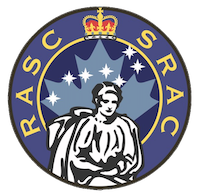Sir William Huggins, OM, KCB, FRS (7 February 1824 – 12 May 1910) was an English astronomer best known for his pioneering work in astronomical spectroscopy.
William Huggins was born at Cornhill, Middlesex in 1824. He married Margaret Lindsay (14 August, 1848 - 24 March 1915,) daughter of John Murray of Dublin, who also had an interest in astronomy and scientific research. Lady Huggins participated in her husband's photography and helped to systemise their research.
Huggins built a private observatory at 90 Upper Tulse Hill, South London from where he and his wife carried out extensive observations of the spectral emission lines and absorption lines of various celestial objects. On August 29, 1864, Huggins was the first to take the spectrum of a planetary nebula when he analyzed NGC 6543. He was also the first to distinguish between nebulae and galaxies by showing that some (like the Orion Nebula) had pure emission spectra characteristic of gas, while others like the Andromeda Galaxy had spectra characteristic of stars. Huggins was assisted in the analysis of spectra by his neighbour, the chemist William Allen Miller. Huggins was also the first to adopt dry plate photography in imaging astronomical objects.
Huggins was elected a Fellow of the Royal Society in June, 1865, was awarded their Royal Medal (1866), Rumford Medal (1880) and Copley Medal (1898) and delivered their Bakerian Lecture in 1885. He then served as their president from 1900 to 1905.
He died at his home in Tulse Hill, London after an operation in 1910 and was buried at Golders Green Cemetery. Craters on both the Moon and Mars bear his name, as does the asteroid (2635) Huggins.
At a meeting on 1891-11-16, on motion of Mr. Andrew Elvins, seconded by Sir Adam Wilson, Dr. William Huggins was elected an Honourary Member of the Astronomical and Physical Society of Toronto. In support of his motion, Mr. Elvins addressed the Society at some length on the subject of spectroscopy, its history and development, and of the debt owed by Science to Dr. Huggins. Graceful reference was made to the assistance rendered the veteran investigator by his wife.
The following letter from Dr. William Huggins, F.R.S., F.R.A.S., F.R.S.E., Correspondent of the Institute of France, President of the British Association, etc., was read: "I feel it a great honour that your new and promising Society should have selected my name for one of your ten Honourary Members. It will give me great pleasure to accept the Honourary Membership."
In 1905, when the Canadian expedition to observe the total eclipse of August 30, in Labrador, was being organized, the Council of the Society extended to Sir William Huggins an invitation to act as one of its representatives. He was unable to accept, but the letter of acknowledgement which he sent showed that our request had given him much pleasure.
Surname:
Huggins
Title/Given Name:
Dr. Sir William
Nation(s):
United Kingdom
Start:
1891
End:
1910

